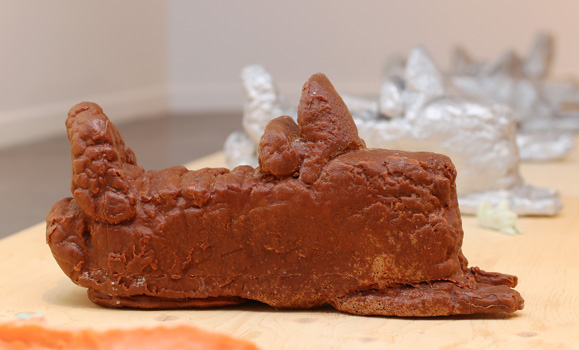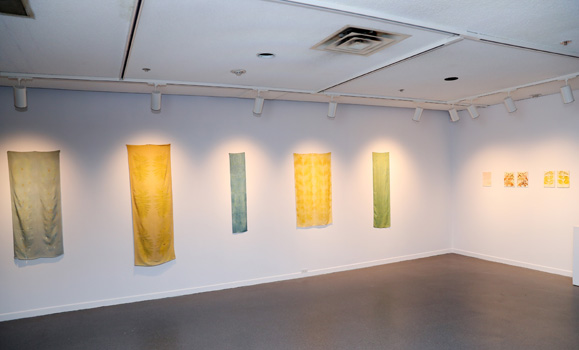So much of what we hear and learn about the environmental challenges facing the world is communicated to us through the language of science and policy.
A new exhibition on now at the Dalhousie Art Gallery seeks to amplify another dimension of the conversation by exploring the power of the arts in shaping society’s understanding of the changing environment.
Curated by Jennifer Yakamovich, a current Master of Environmental Studies (MES) student and researcher in Professor Tarah Wright’s Education for Sustainability Research Group, Nature as Communities features the work of a variety of socially and environmentally engaged artists from across Canada.
Jennifer approached the art gallery about the potential for an exhibition last fall as she was interviewing artists as part of the fieldwork for her master’s thesis, which asks how the arts can help foster more sustainable futures.
“Art is a really important means of communicating and perhaps we need to be thinking about that a little more deeply about how important it is as a cultural force in addressing and communicating environmental knowledge,” says Jennifer.

Like Jennifer’s own research, the exhibition is highly interdisciplinary, including a range of work from artists working across different media. You’ll find the work of painters, sculptors, photographers, textile artists, video artists and more.
Nature as Communities is Jennifer’s first experience with art curation and has been laid out with an eye to provoking questions about re-imagining our understanding of the environment through, as described, “investigations into notions of nature, culture and place from within Canada’s multiple geographies.”
“I’m writing about these ideas in my thesis, but then I was really interested in seeing the actualization of that and seeing how we can make these connections in a tangible way,” she says. “How can we see how artists are making futures in their very arts practice? How are they subverting certain ideas as well or asking us to question that a little bit?”

She hopes the show will serve as an example of how to create these new, different configurations and assemblages of researchers and artists and activists and scholars coming together.
“There needs to be this collaborative approach to research, to communicating knowledge and recognizing that there are many different 'ways of knowing.' Some forms of knowledge tend to get privileged over others,” she says. “This is a way of looking at research and inquiry from a different angle.”
Artists included are Diyan Achjadi, PA System & Embassy of Imagination (Alexa Hatanaka and Patrick Thompson, and youth collaborators: David Pudlat, Moe Kelly, Christine Adamie, Nathan Adla, Lachaolasie Akesuk), Ayoka Junaid, Becoming Sensor (Ayelen Liberona and Natasha Myers, with sound composer Allison Cameron), Sandra Semchuk, Jay White and Jennifer Schine.
Nature as Communities opened May 3 and runs until July 14 at the Dalhousie Art Gallery. A public reception for the event will take place from 5 to 7 pm on May 30 — admission is free and all are welcome.




